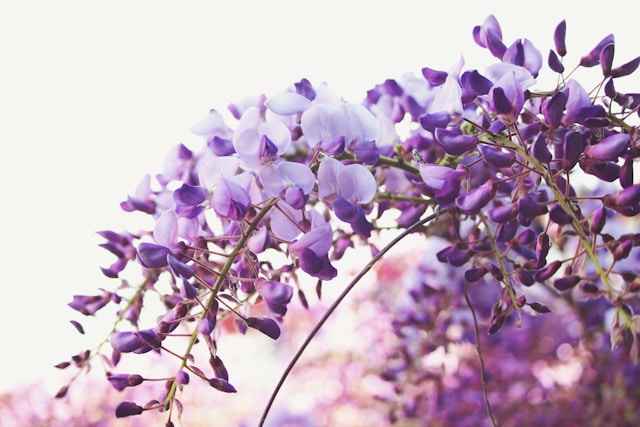August is a month of hazy golden evenings, ripening tomatoes, and borders bursting with colour. However, while it’s tempting to just lounge in a deckchair with a glass of something chilled (and you absolutely should), there are still some important August gardening jobs to keep your plants in top shape in the late summer. Think of it as pottering with purpose!
August Gardening Jobs
Hedge Trimming and Pruning
Most hedges can be given their final trim towards the end of August, as they will not grow much after this. If you want a level top hedge, fix a post at either end and tie twine between them at the required height. Trim the sides of the hedge first, working from the bottom up, whether using a powered hedge trimmer or hand shears. The reason for working upwards is that as you cut, the trimmings will fall away and you will be better able to see where you are going. Make the hedge wider at the base and narrower at the top. This way, it will stand up to the weather better. The top can be trimmed last using the twine as a guide.
Large-leaved hedges such as laurel shouldn’t be trimmed with hedge trimmers, because these cut through the large leaves, causing them to go brown. The way to cut large-leaved hedges is with secateurs or very carefully with sharp hand shears. If you have a large hedge this is a long, tiresome task, but the hedge will look so much better with no browned-off bits.
If you didn’t prune box hedges earlier in the year, wait till the weather gets a bit cooler later in the month and do it then.
 Another of the important August gardening jobs is pruning. Rambling roses should be pruned after they have flowered. It’s really very easy – all you have to remember is they produce flowers on wood produced the previous year. All side shoots that have flowered can be pruned back to one or two buds from the main stems. Any new, strong shoots should be tied in to replace older shoots. Any very old stems should be cut right back down to the base. In this way you’ll encourage new shoots.
Another of the important August gardening jobs is pruning. Rambling roses should be pruned after they have flowered. It’s really very easy – all you have to remember is they produce flowers on wood produced the previous year. All side shoots that have flowered can be pruned back to one or two buds from the main stems. Any new, strong shoots should be tied in to replace older shoots. Any very old stems should be cut right back down to the base. In this way you’ll encourage new shoots.
Complete summer pruning of wisteria this month. Again, it’s very simple: just prune all the long new whippy growth back to five or six buds from the main stem. This encourages the plant to produce flower buds. If you have a young plant and want to extend the framework, leave the side shoots on but tie them in to where you want the growth to be. Established wisterias are very vigorous so it’s important to let them know who’s the boss in the garden. Prune this month and again in February and they will reward you with abundance.

Weed Control
Weeding is a perennial problem. Very simply, weeds are uninvited guests in the garden who can quickly take over at this time of year. It’s important to keep on top of them in decorative borders and vegetable plots, as they compete for light, space and precious moisture in the garden.
There are two main sorts of weed. Annuals are in many ways the easiest to deal with; they normally reproduce by means of seeds and are best dealt with by hoeing. The gardener’s best friend at this time of year is a hoe. There are several types available but my favourite is the Dutch hoe. It’s designed to push or pull through the soil to cut weeds just under the surface. Its tool-head is a loop of flat, sharpened strap metal. Once you’ve sliced off the top of the weeds, leave them on the surface to dry out in the sun; this is a job for a dry day.

The second sort of weeds are perennials, which are trickier to deal with because as well as sowing seed they pop up year after year. Common culprits are dandelions, ground elder, bindweed, brambles, nettles, couch grass and ivy, which can be quite a problem. It’s very important to remove the roots of these weeds or they will grow back, even if you leave a tiny bit in the ground.
If you have an area in your garden that is badly overgrown with weeds and you would like to cultivate it, consider covering the area for a season with an old carpet or sheets of black plastic pegged down. This stops the light getting through and will eventually kill all the weeds. It’s fairly drastic action because obviously it looks awful, but it will work well in the long term.
The alternative is to make friends with so-called weeds. Many are beneficial for wildlife and really, a weed is only a plant in the wrong place!
If you would like more information about our garden design services, get in touch today.
